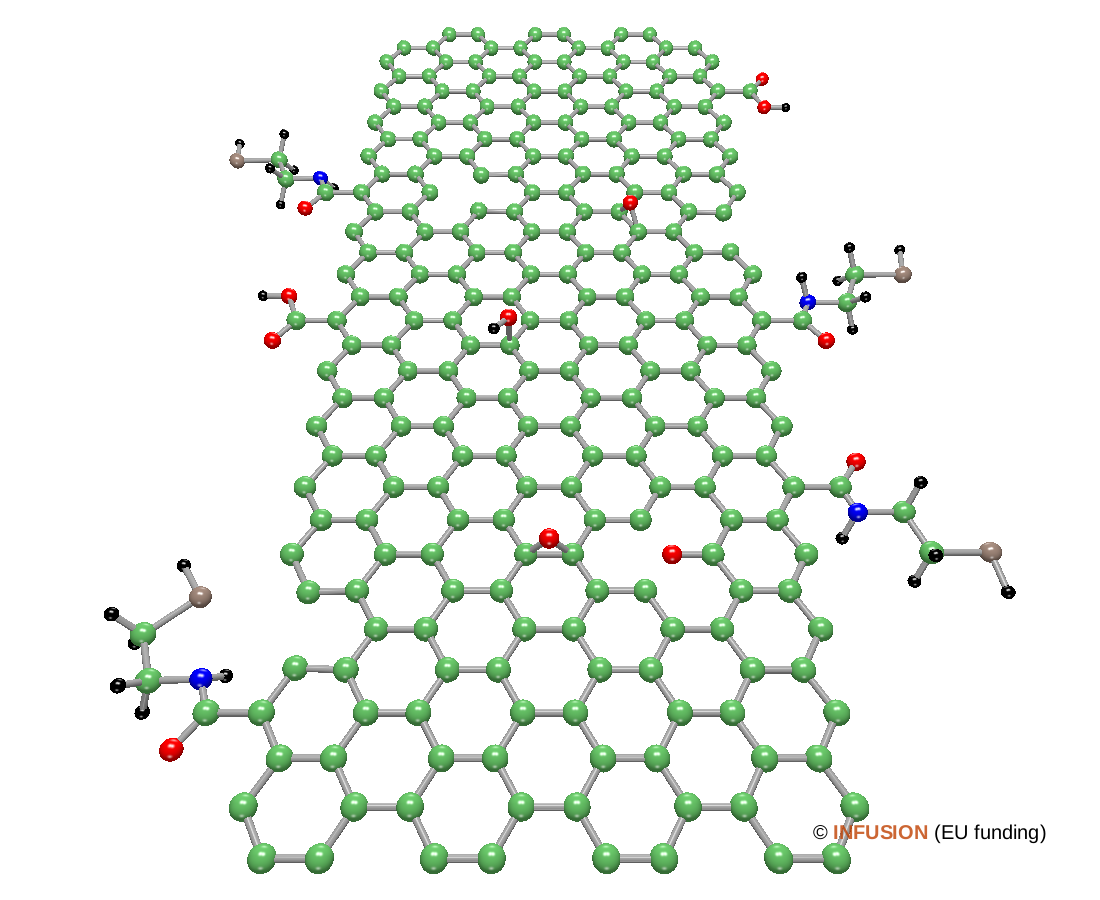Graphene oxide nanoribbons
Oxidative unzipping of multi-walled carbon nanotubes is a promising scalable approach for producing carbon nanoribbons [1]. The nanoribbons produced in this way incorporate many oxygen-containing groups, which is the reason why they are called graphene oxide nanoribbons (GONR). They can be reduced by an appropriate thermal treatment. Still, they contain O, OH, COOH and other oxygen groups. They can be considered as functionalized carbon nanostructures given, for instance, their solubility in water.
 |
The presence of functional groups on GONRs can be exploited to attach moieties specifically chosen to give new properties to the nanostructure. The figure on the left illustrates the case where amide groups having a thiol termination replace the hydroxyl part of carboxyl groups (COOH) existing on the nanoribbon [2]. In the ball-and-stick model, the green balls are C atoms, O is represented in red, N is in blue, and S in brown. The small black balls are H atoms. The terminal S group can attach on the surface of gold nanoparticles, for instance. Thanks to the amino thiols, the GONRs are closely linked to the metallic nanoparticles, forming a complex hybrid nanostructured material. The close proximity of gold clusters and graphene-like structures make this material a substrate well-suited for surface enhanced Raman spectroscopy [2]. |
- "Longitudinal unzipping of carbon nanotubes to form graphene nanoribbons" D.V. Kosynkin, A.L. Higginbotham, A. Sinitskii, J.R. Lomeda, A. Dimiev, K.B. Price, and J.M. Tour, Nature 458 (2009) 872-876 [DOI: 10.1038/nature07872].
- "Thiolated graphene oxide nanoribbons as templates for anchoring gold nanoparticles: two‐dimensional nanostructures for SERS" J.M. González‐Domínguez, A.Colusso, L. Litti, A. Ostric, M. Meneghetti, and T. Da Ros, ChemPlusChem 84 (2019) 862-871 [DOI: 10.1002/cplu.201900150].